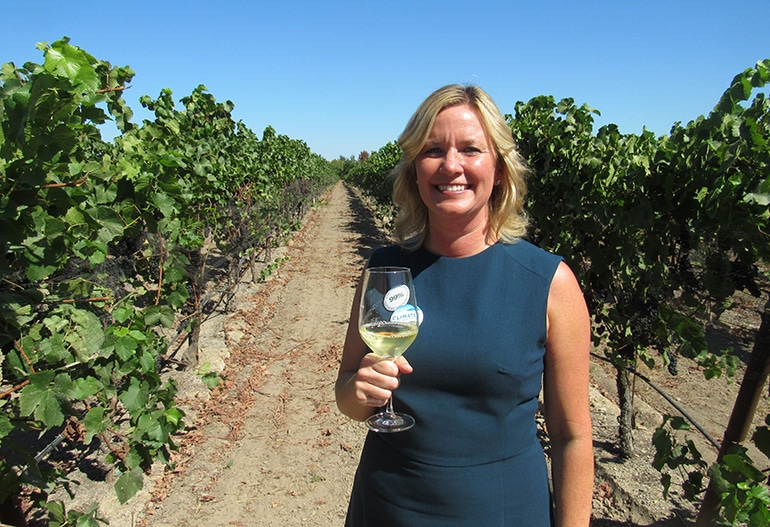
When the Sonoma County Winegrowers (SCW) started contemplating a campaign to promote sustainability, many people still didn’t know quite how to define it.
“The word ‘sustainability’ wasn’t being used as much” in 2014, when the organization announced its goal of having all the county’s more than 1,800 growers participate in established conservation programs, SCW president Karissa Kruse said.
However, both market forces and nature – California’s historic drought from 2012-2016 – were putting sustainability front and center in the minds of producers of just about all commodities, including wine.
“We were really committed to the mindset. We did six months of planning,” Kruse told reporters at a recent news conference. “Now we have so much momentum. So many regions are following suit.”
Today 99 percent of the county’s vineyards participate in a SCW-recognized voluntary program such as the Fish-Friendly Farming, California Sustainable Winegrowing Alliance, Lodi Rules for Sustainable Winegrowing or Sustainability in Practice (SIP) programs.
The percentage is up from 89 percent in December 2018. SCW pays the cost of the farm plan and audit for the first year.
Multitude of benchmarks
Each of the programs has a multitude of benchmarks that must be met. For instance, the Lodi Rules’ more than 100 desired practices include chapters for soil, water, pests and the overall ecosystem, as well as others for managing the business and human resources, according to the Lodi Winegrowers Commission’s website. The program also uses a pesticide scoring system.
It’s important to measure all aspects of a farm’s success – “environmental stewardship, social responsibility and maintaining a viable business,” said Kruse, adding that SCW frequently hosts workshops on succession planning.
Sonoma County’s effort to achieve 100 percent sustainability in its vineyards has gained international attention, as Kruse has been invited to speak all over the world. Southern grain farmers were set to visit the county in late September to gather ideas, she said.
“The unexpected thing that happened is it thrust us into global leadership,” she said.
By the end of this year, the “Sonoma County sustainable” label will be on a half-million cases of wine, according to Kruse. “We just completed our first label in French,” she said.
Paying a premium
The push comes as an April survey by the international consulting firm Wine Intelligence found that wine endorsed with a “certified sustainable” label yielded the highest likelihood to buy among U.S. consumers. Nine in 10 millennials are willing to pay more for sustainably produced wine, according to the survey of 2,000 regular wine consumers.
U.S. wine consumers of all ages were willing to pay an average of $3 more for a bottle of sustainably produced wine, but millennials and Generation Z consumers of legal drinking age might go higher, as sustainability certifications have a strong appeal to those drinkers, according to the survey.
In putting Sonoma County on consumers’ sustainability map, the “secret sauce” is growers’ willingness to collaborate, Kruse said. Most vineyards in the county are small, and growers lend each other trucks, tractors and crews to get through harvest, she said.
For more news on pests, disease management and other issues affecting vineyards, subscribe to the bi-monthly newsletter The Grape Line.
About the Author(s)
You May Also Like






